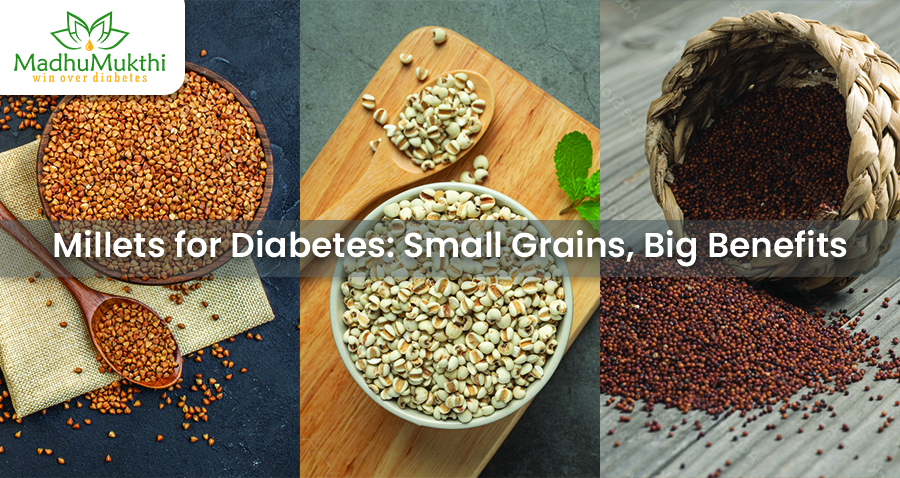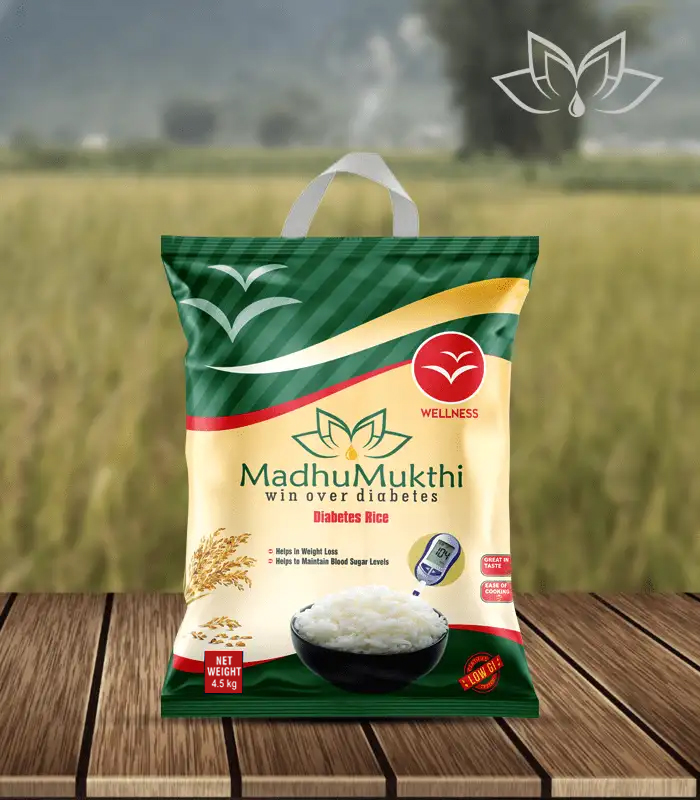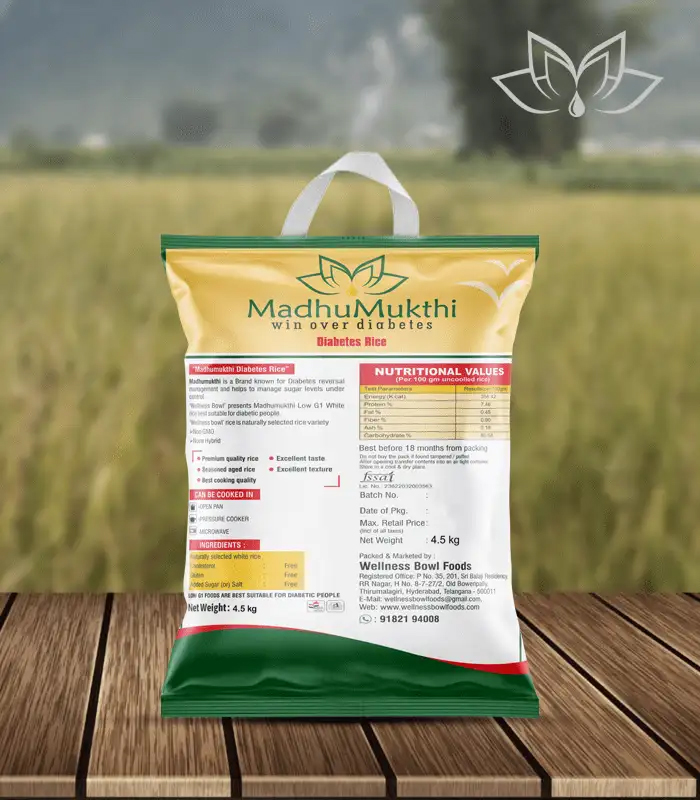
In the pursuit of a healthier lifestyle, understanding the significance of millets and their historical roots provides a crucial foundation. Millets, often underestimated, have played a vital role in human diets for centuries. This blog aims to shed light on their historical importance, define what millets are, and explore their newfound relevance in managing diabetes.
Understanding Millets
What Are Millets?
Millets are not just tiny grains; they are powerful nutritional gems that pack a punch in promoting health and well-being. Unlike rice, they are gluten-free, making them beneficial for individuals with diabetes. They are also packed with crucial minerals like magnesium, phosphorus, and zinc, crucial for overall health and metabolism. Additionally, millet rice emerges as a compelling alternative to traditional grains, especially for those managing diabetes.
Millets defined by their unique characteristics and diverse origins, have played a crucial role in sustaining populations across the globe. We’ll explore the different varieties of millets, focusing on foxtail, pearl, and finger millet. Additionally, we’ll examine the nutritional composition of millets, offering an overview of their rich nutrient content and highlighting millet rice as a diabetes-friendly alternative.
Varieties of Millets: Exploring Foxtail, Pearl, and Finger Millet
Among the numerous varieties, Foxtail Millet, Pearl Millet, and Finger Millet stand out for their unique properties and adaptability. Foxtail has a delicate, feathery appearance, high protein content, and low GI. It’s an ideal choice for blood sugar control. Pearl Millet, is a powerhouse of iron and calcium, perfect for strengthening bones and boosting immunity. Finger Millet, also known as Ragi, is revered for its rich flavor and nutritional composition, featuring essential amino acids and dietary fiber.
Understanding Millets in Diabetes Diet
Understanding the relationship between diabetes and diet is pivotal. Choosing the right foods becomes a cornerstone in effective diabetes management. Millets, with their unique nutritional attributes, present an opportunity to craft a diabetes-friendly diet plan, offering a substitute for conventional grains. For individuals with diabetes, replacing refined rice with millet rice can be a game-changer. Millet rice, with its complex carbohydrates and lower GI, releases glucose gradually, preventing blood sugar spikes. This sustained energy release also keeps you feeling fuller for longer, aiding weight management, another crucial aspect of diabetes control.
Replacing Traditional Grains with Millets
Transitioning to a millet-based diet is simple and rewarding. Start by replacing rice or wheat in your regular meals with millet rice, millet flakes, or millet flour. These tiny grains can be incorporated in various ways, from fluffy porridges and savory salads to delicious pancakes and hearty rotis. Experiment with different varieties and discover combinations that tantalize your taste buds. Remember, variety is key, so explore the diverse world of millet recipes and find your perfect diabetes-friendly culinary journey.
Unlocking the Secrets of Millet in Blood Sugar Control:
Millets’ magic lies in their slow-release carbohydrates and high fiber content. These work together to delay glucose absorption into the bloodstream, preventing spikes and crashes in blood sugar levels.
Specific Benefits of Foxtail Millet
Among the millet trio, Foxtail Millet emerges as a champion for blood sugar control. Its delicate, feathery seeds hold a treasure trove of nutrients, including a remarkable protein content of 12% and a remarkably low glycemic index of 48. This means foxtail millet releases glucose gradually, preventing blood sugar spikes and ensuring sustained energy release.
Regulator of Blood Sugar:
Studies have shown that incorporating foxtail millet into the diet can significantly improve blood sugar control in individuals with type 2 diabetes. One such study demonstrated that consuming foxtail millet porridge for breakfast resulted in lower blood sugar levels two hours after the meal compared to consuming rice porridge.
Creative Culinary Delights:
Foxtail millet’s versatility shines in the kitchen. Its mild, slightly sweet flavor lends itself to various dishes. Some delicious ways to incorporate diabetes-friendly millets into your diet include Foxtail Millet Porridge, Upma, Pancakes, and Salad.
Specific Benefits of Pearl Millet
Pearl Millet, with its larger, pearly grains, adds a unique texture and earthy flavor to your meals. It boasts an impressive nutritional profile, being particularly rich in iron and calcium, two minerals crucial for overall health and bone strength.
Aiding Diabetes Management:
Pearl millet’s low GI index of 54 and high fiber content make it a valuable addition to a diabetes-friendly diet. According to studies, the consumption of pearl millet can help improve insulin sensitivity and reduce blood sugar levels following meals.
Recipe Ideas for a Diabetes-Friendly Feast:
Pearl millet’s versatility extends beyond the expected. Some delicious ways to incorporate it into your diabetes-friendly menu are Pearl Millet Roti, Pearl Millet Pulao, Pearl Millet Khichdi, and Pearl Millet Porridge.
Specific Benefits of Finger Millet
Finger Millet, also known as Ragi, stands out for its unique nutritional profile. It boasts a complete protein profile, containing all nine essential amino acids, making it a valuable addition for vegetarians and vegans. Additionally, its high dietary fiber content aids digestion and promotes satiety, contributing to weight management.
Enhancing Insulin Sensitivity:
Finger millet’s low GI index of 58 and high fiber content make it a powerful tool for managing blood sugar levels and enhancing insulin sensitivity. Studies have shown that consuming finger millet can significantly improve glycemic control in individuals with type 2 diabetes.
Finger Millet Recipes for a Healthy Lifestyle:
Finger millet’s earthy flavor and unique texture make it a versatile ingredient in the kitchen. Some delicious ways to incorporate it into your diabetes diet are Ragi Mudde, Ragi Dosa, Ragi Roti, and Ragi Cookies.
Beyond Blood Sugar: The Multifaceted Benefits of Millets
While their impact on blood sugar control is undoubtedly impressive, the millets benefits extend far beyond diabetes management. These tiny grains pack a powerful punch when it comes to overall health and well-being.
Heart Health Heroes:
Millets are rich in soluble fiber, which helps lower cholesterol levels and reduce the risk of heart disease.
Weight Management Warriors:
The high fiber content of millet promotes satiety and keeps you feeling fuller for longer, aiding in weight management. This is particularly beneficial for individuals with diabetes, as maintaining a healthy weight can significantly improve overall health outcomes.
Digestive Dynamos:
The abundance of dietary fiber in millets also works wonders for digestion. It promotes regular bowel movements, prevents constipation, and keeps your gut microbiome healthy. This contributes to better nutrient absorption and overall digestive health.
Antioxidant All-Stars:
Millets are rich in various antioxidants, such as phenolic acids and tannins. These antioxidants combat oxidative stress, protecting cells from damage and reducing the risk of chronic diseases like diabetes, heart disease, and even cancer.
Conclusion: Embracing the Millet Revolution
In a world struggling with rising diabetes rates, millets emerge as a beacon of hope. These ancient grains offer a potent combination of low GI, high fiber, and essential nutrients, making them ideal allies in the fight against diabetes and other chronic health conditions.By incorporating millet into your diet, you can not only manage your blood sugar levels but also enhance your overall health and well-being. So, why not embark on the millet revolution? Explore the diverse varieties, experiment with delicious recipes, and discover the immense potential these tiny titans hold for a healthier, happier you.





